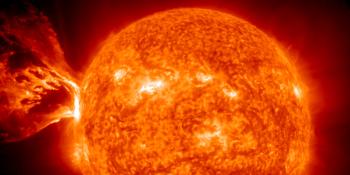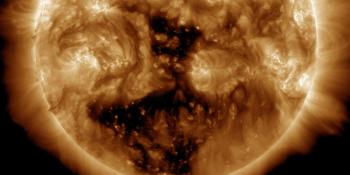Het archief bekijken van vrijdag 29 mei 2020
Selecteer het gewenste archief onderdeel
First M-class solar flare of a Solar Cycle 25 region!
925 days. That is the amount of time we had to wait since we last saw a M-class solar flare on the Sun. But today the wait is over. An impulsive M1.19 solar flare (minor R1 radio blackout) took place on our Sun this morning peaking at 07:24 UTC. NASA's Solar Dynamics Observatory seems to have taken a break from its sun-watching duty for some reason but STEREO Ahead captured the impulsive eruption confirming it comes from a sunspot region near the east limb from Earth's point of view. This sunspot region very likely belongs to Solar Cycle 25 due to its high latitude and it could even be the first M-class solar flare of Solar Cycle 25 depending on if we have passed solar minimum or not.
Laatste nieuws
Laatste forumberichten
Steun Poollicht.be!
Om ook bereikbaar te blijven bij grote poollichtkansen hebben we een zware server nodig die alle bezoekers aankan. Doneer en steun dit project zodat we online blijven en je geen enkele poollichtkans mist!

Laatste alerts
Ruimteweer feitjes
| Laatste X-klasse uitbarsting | 28/03/2025 | X1.1 |
| Laatste M-klasse uitbarsting | 22/04/2025 | M1.3 |
| Laatste geomagnetische storm | 21/04/2025 | Kp5+ (G1) |
| Zonnevlekkenloze dagen | |
|---|---|
| Laatste zonnevlekkenloze dag | 08/06/2022 |
| Maandelijks gemiddeld zonnevlekkengetal | |
|---|---|
| maart 2025 | 134.2 -20.4 |
| april 2025 | 126.2 -8 |
| Afgelopen 30 dagen | 125.9 -2.4 |


